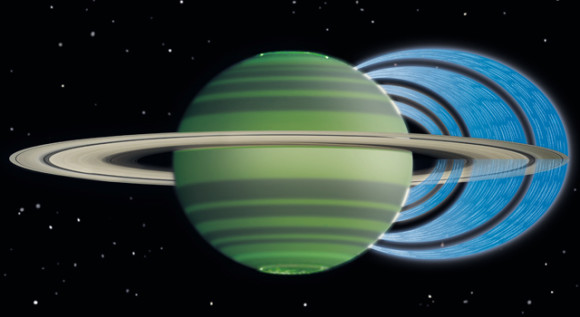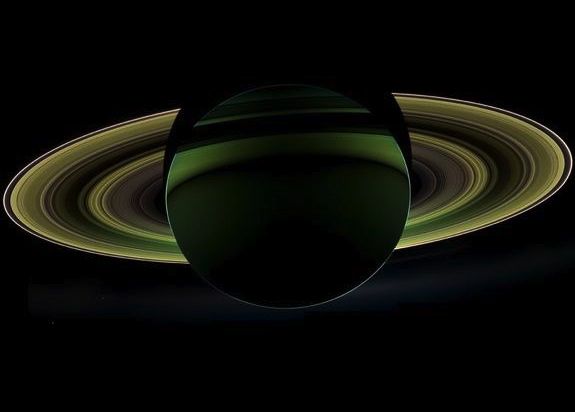Scientists have known for decades that Saturn’s rings are made of ices. A new study released today (April 10, 2013) suggests the rings erode over time, creating a sort of rain consisting charged water particles, which go from the rings into Saturn’s atmosphere. The study finds there is more of this “ring rain” than anyone knew, and it appears to affect larger areas of the planet’s atmosphere than previously thought.
Before this, scientists thought water particles fell from the rings to Saturn’s atmosphere in two or three narrow bands. But data obtained at the Keck Observatory on Mauna Kea, Hawaii and analyzed by astronomers the University of Leicester suggests that the “ring rain” is widespread and influences the composition and temperature of large parts of Saturn’s upper atmosphere.

The rain from the rings doesn’t fall in the same sense that rain falls on Earth. Instead, Saturn’s magnetic field is thought to draw the charged water particles from the rings toward the planet.
James O’Donoghue, the paper’s lead author and a postgraduate researcher at University of Leicester, said in a press release:
Saturn is the first planet to show significant interaction between its atmosphere and ring system. The main effect of ring rain is that it acts to “quench” the ionosphere of Saturn. In other words, this rain severely reduces the electron densities in regions in which it falls.
This was a NASA-funded study. The paper appears in this week’s issue of the journal Nature.
Read more from NASA about rain from Saturn’s rings

Bottom line: Saturn’s icy rings erode, causing a rain of charged water particles that flows onto Saturn’s upper atmosphere, thereby “quenching” the ionosphere of Saturn.











